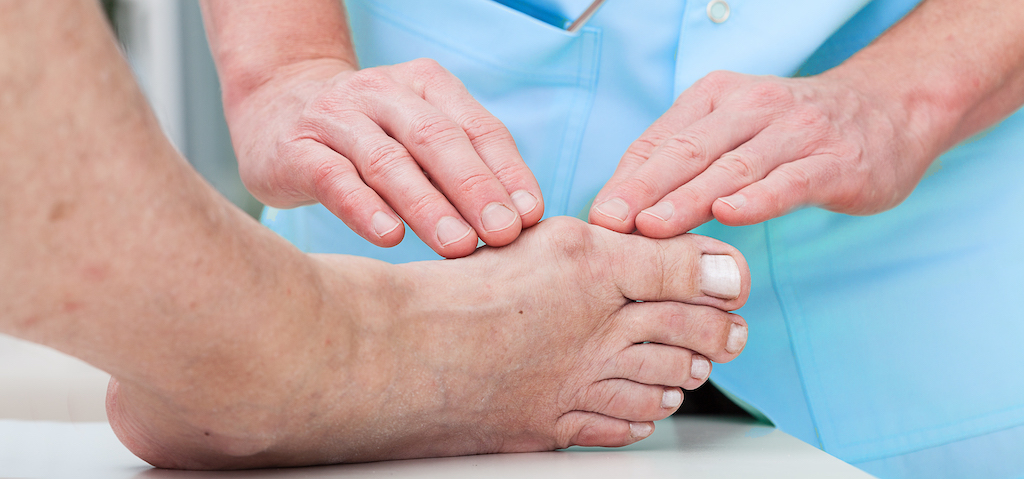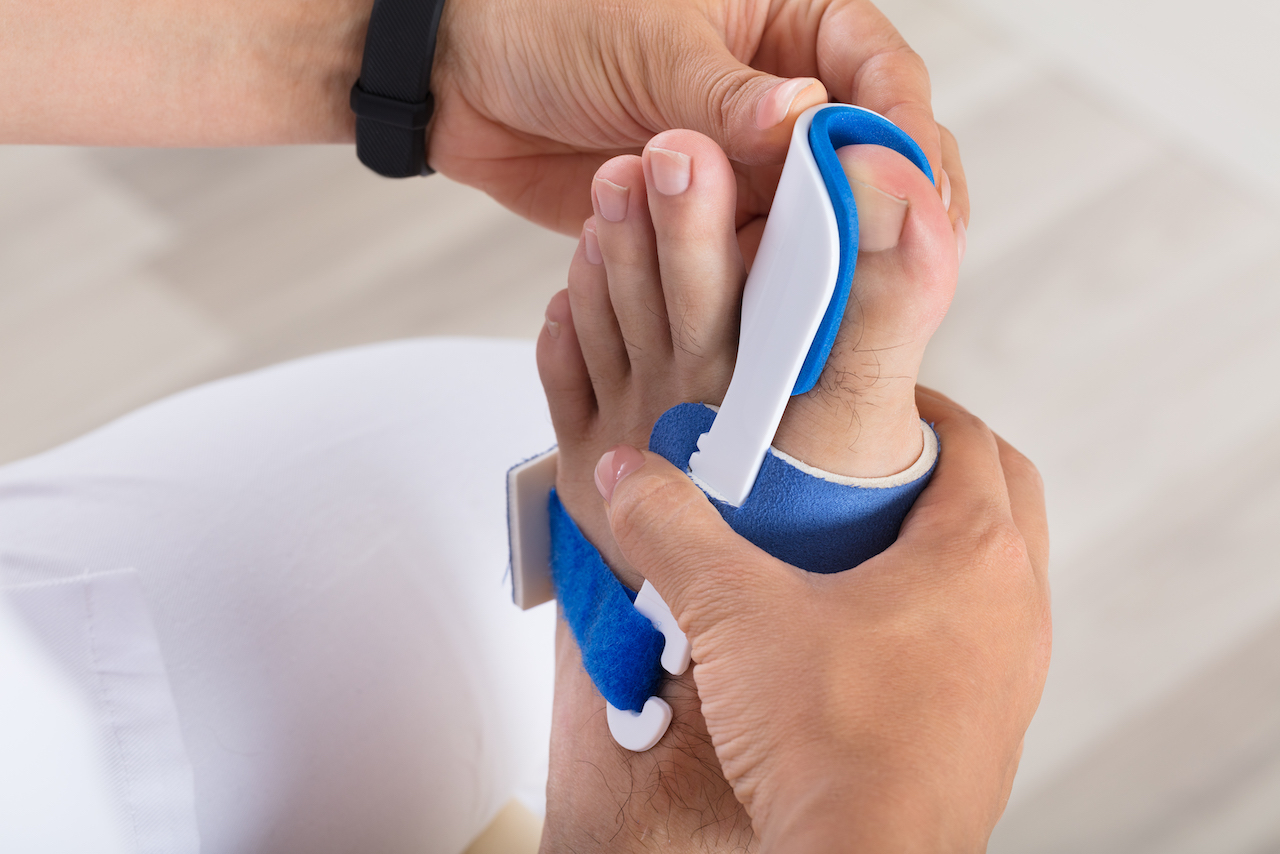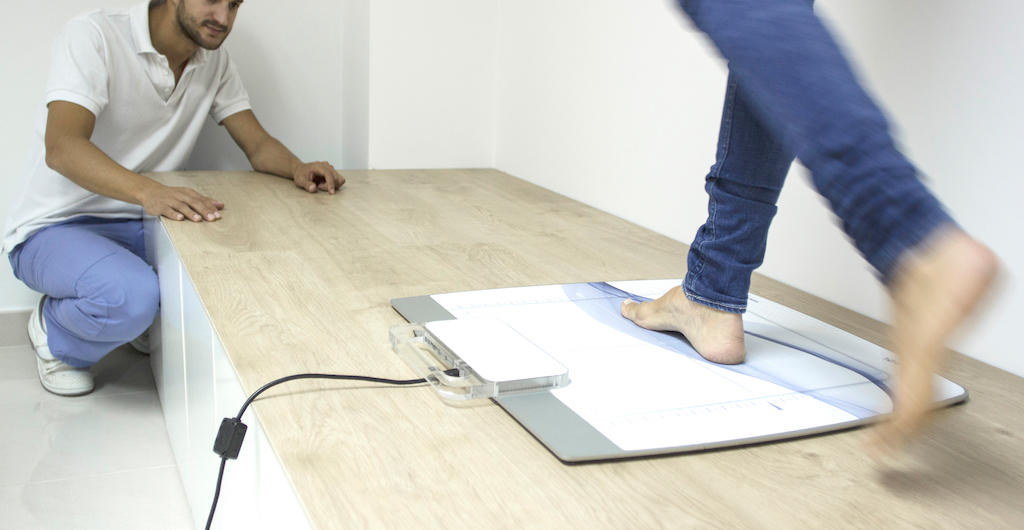A Bunion usually starts out small and progressively gets bigger worsening over time. The medical term for a bunion is called “hallux valgus” and is characterised by the bump on the inner side of the big toe as the toe points sideways towards the second toe.
The causes of a bunion can be many and is usually aggravated by wearing narrow shoes, high heels and even thongs as it takes greater effort for the toe to keep the thong on. There are various levels of treatment strategies and the treatment approach will vary depending on the cause and size of the bunion. Some bunions are slightly tender with a mild deformity whilst others are extremely painful, swollen, disrupting the position of the second toe due to the severity of the deformity.
When treating bunions our Podiatrist uses a 5 phase strategy to get the best results:
PHASE I: Bunion First Aid Relief. Our Podiatrist Dr Ella Wright will focus on pain relief, reduction of swelling, treatment of any subacute skin injury and protecting the big toe joint to ensure you are more comfortable as he works out the underlying cause of the bunion.
PHASE II: Lower Limb Biomechanical Assessment & Joint Mobility. Our Podiatrist will focus on restoring normal ankle and foot range of motion. A full biomechanical assessment of how the foot strikes the ground and toes off (gait analysis) is very important in understanding the underlying reasons the bunion developed in the first place. Often bunions are associated with flat feet so unless this is addressed, the continual trauma transferred to the big toe due to partly collapsed arches in the feet will be left unchecked. All 3 arches in the foot are assessed as well as the surrounding joints and muscles during the phases of both walking and standing upright.
Treatment may include custom foot orthotics, joint mobilisation and alignment techniques, dry needling, trigger point therapy, soft tissue massage, shock wave therapy, ultrasound, TENS, muscle and joint stretches, kinesio-taping, supportive strapping, bunion splint or support brace.
PHASE III: Restoring Normal Muscle control and strength in the foot and lower leg are vital for sustainable results. Our Podiatrist will assess and prescribe the best exercises for your specific needs. Balance enhancement exercises, strength exercises, active foot posture correction exercises, as well as proprioception exercises, would be prescribed.
PHASE IV: Returning to Normal Activities. For some, this might simply mean walking the dog whilst for others it could mean preparing for a marathon or labour-intensive activity. Our Podiatrist will adjust your treatment schedule to help you get back to the things you love.
PHASE V: Prevention. If the core underlying culprit is addressed and home self-management instructions adhered to, then reoccurrences of painful bunion episodes will be fewer and far between.


